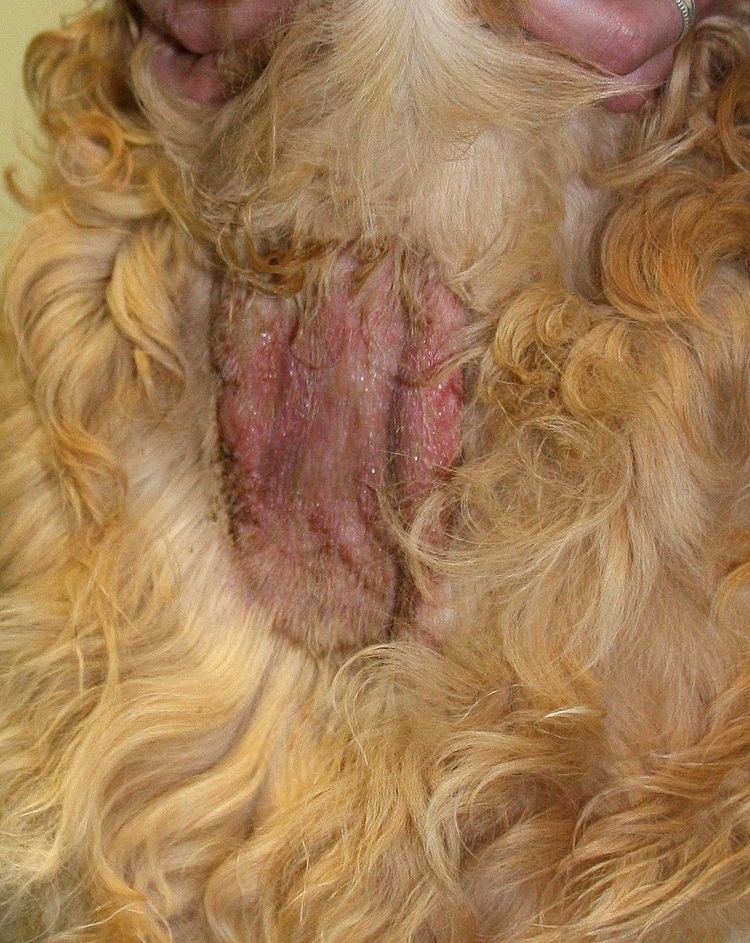 | ||
In veterinary medicine, a "hot spot" (or acute pyoderma, acute moist pyotraumatic dermatitis (AMPD)) is one of the many names for a raw, painful, irritated skin lesion that results in and worsens from a pet (such as a dog or a cat) constantly biting, scratching, chewing, and licking an area of its skin that is irritated or itchy. If it is covered by the dog's hair, the hair holds in the moisture and further irritates it.
Contents
Pyotraumatic dermatitis is an acute, rapidly developing surface bacterial skin infection that occurs as a result of self-inflicted trauma. These lesions are created when the animal licks, chews, scratches and rubs a focal area of skin in response to an itchy (pruritic), painful stimulus.
As the lesion grows, secondary infection from opportunistic bacteria can occur, causing more discomfort and leading the pet to scratch and chew even more.
Other names include wet eczema, moist eczema, summer sores, acute moist alderman, acute moist dermatitis, pyo traumatic dermatitis, or acute pyo traumatic dermatitis. As the nickname "summer sores" suggests, hot spots are more common in the summer; however, the ailment can occur at any time of the year. Many pets that develop them have allergies; they are particularly common in pets with flea allergies. However, any sort of irritation to the skin can result in a hot spot.
Treatment
Locations
Most hot spots occur on the paws and skin.
